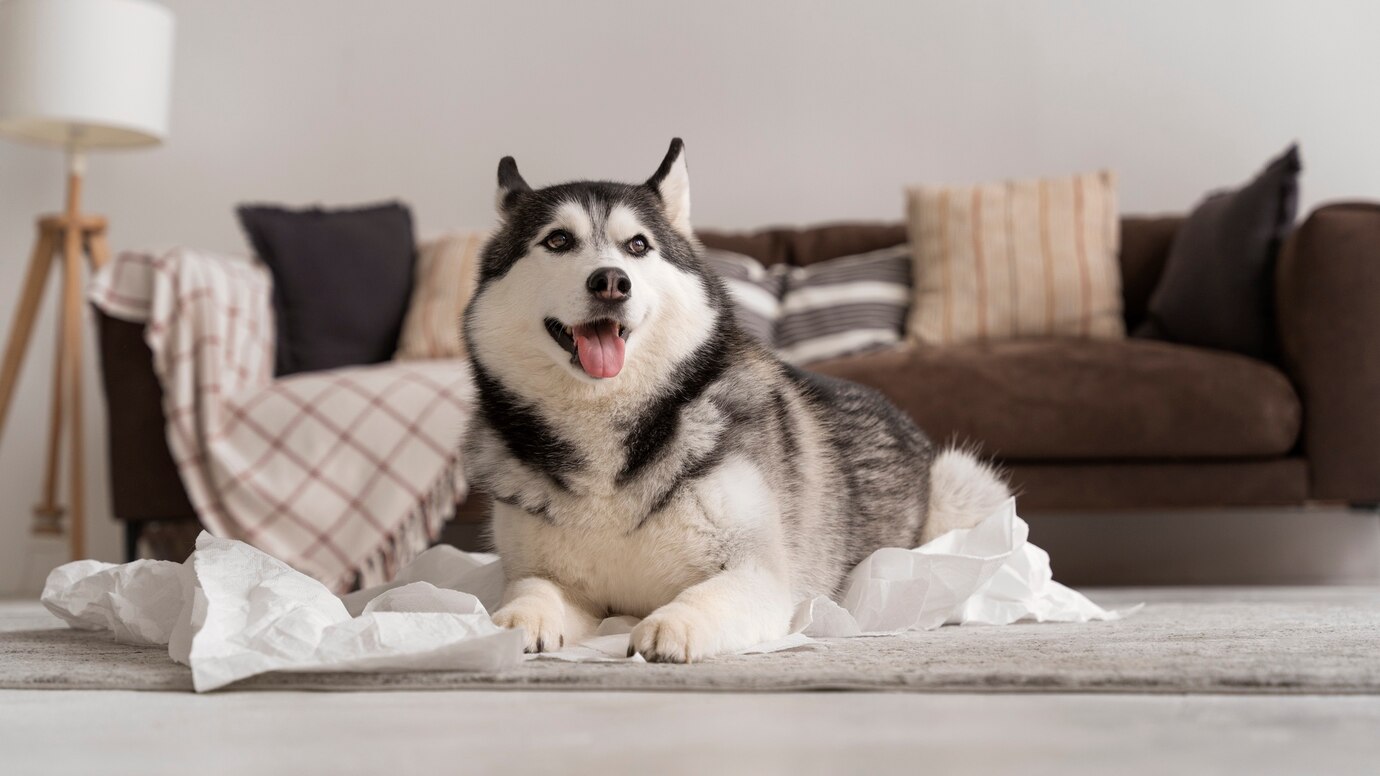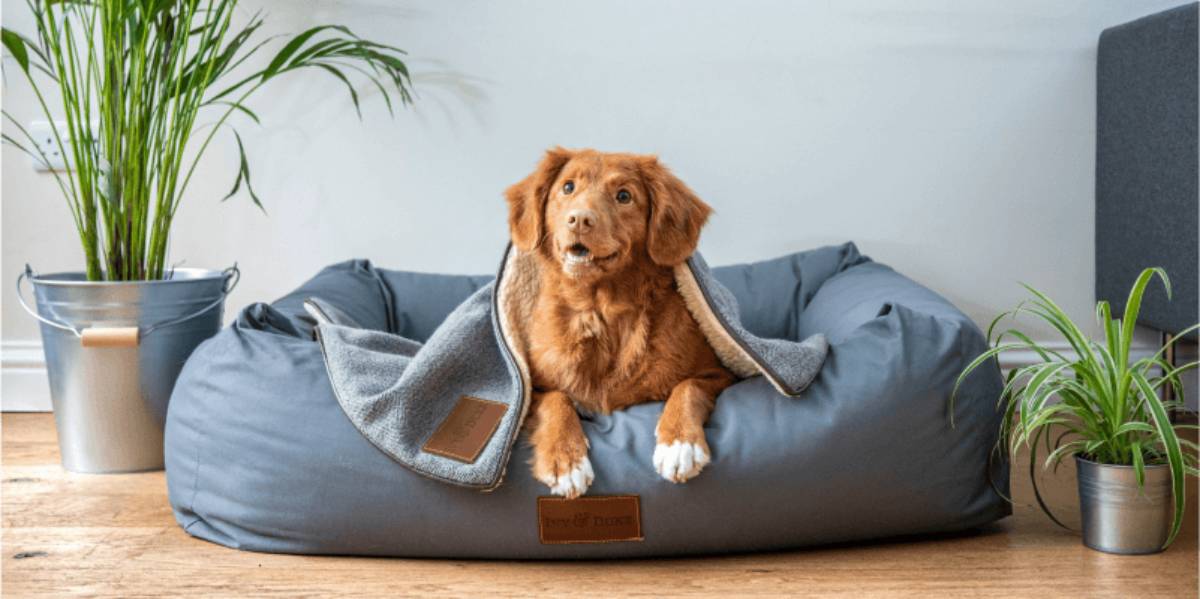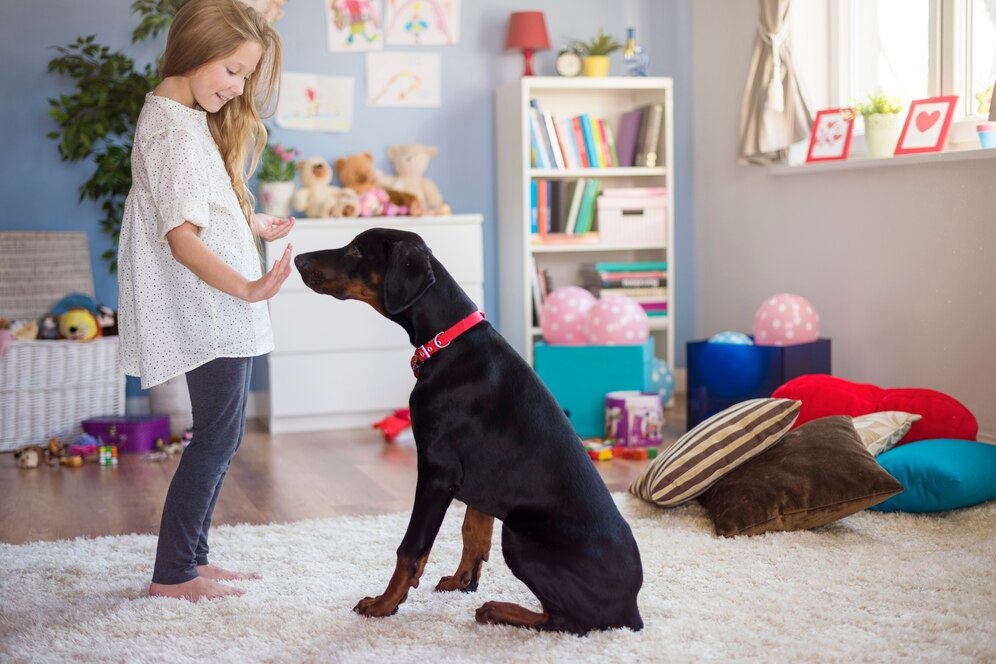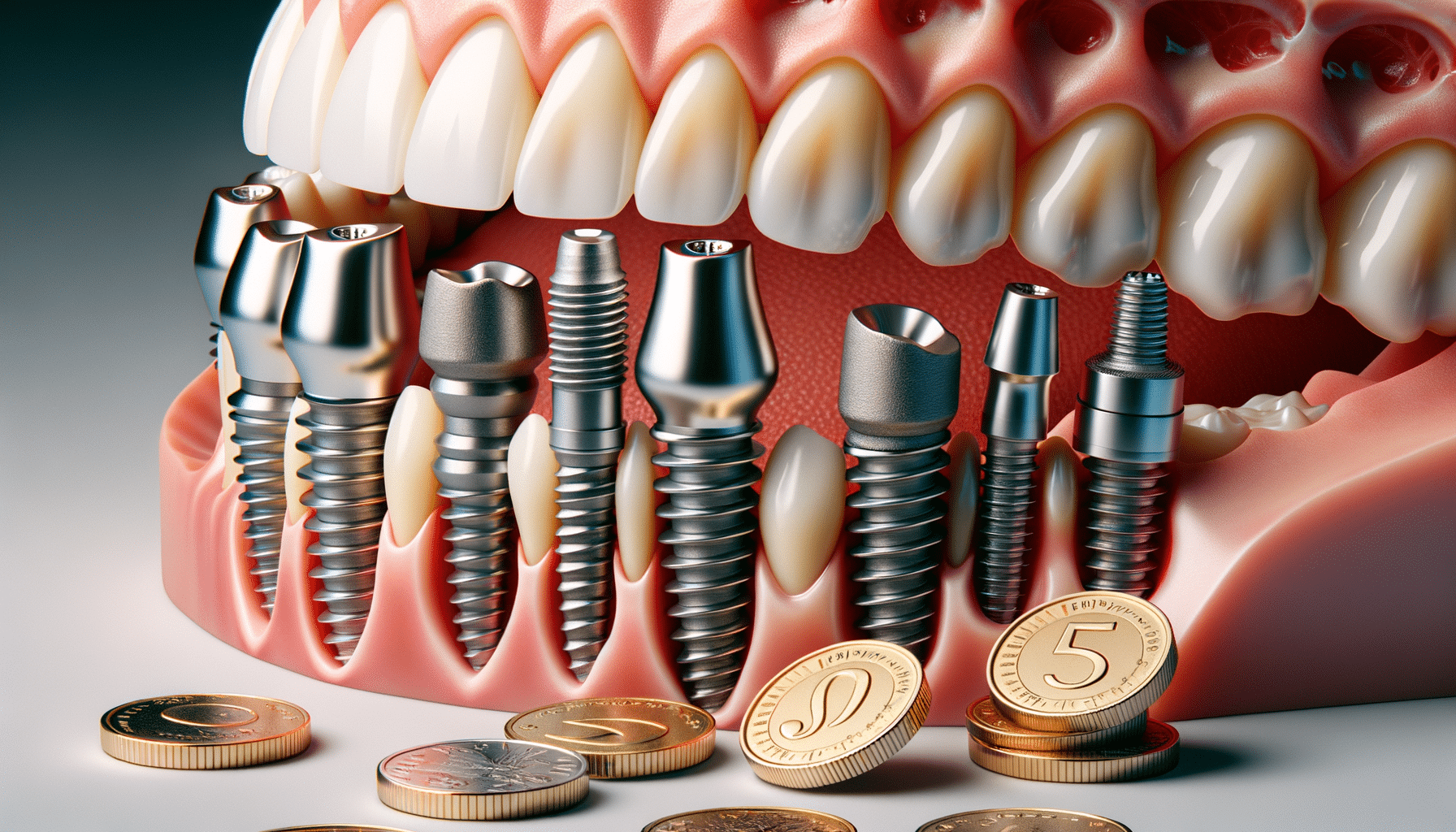
How to Create a Safe & Comfortable Space for Your Pets
Creating a safe and comfortable environment for your pets is essential for their overall well-being. Whether you have a playful pup, a curious cat, or smaller furry companions, designing a pet-friendly home ensures they feel secure, happy, and loved. Beyond providing basic necessities, a thoughtfully designed space promotes physical safety, mental stimulation, and emotional comfort.
Many pet owners unintentionally overlook small household hazards or fail to provide adequate enrichment areas, which can lead to accidents or pet stress. By following this guide, you’ll learn how to transform your living space into a stylish and safe sanctuary for your furry friends without compromising on design or functionality.
Pro Tip: To keep your pets engaged and mentally stimulated, incorporate enrichment activities like treat-dispensing toys, cat trees, or interactive play zones. This prevents boredom and promotes well-being.
Quick Guide: How to Create a Safe & Comfortable Space for Your Pets
- Identify and Eliminate Hazards: Remove electrical cords, secure toxic plants, and store harmful chemicals out of your pet’s reach. Use pet-proof trash bins and childproof latches on cabinets.
- Create Designated Pet Areas: Provide comfortable zones for dogs and cats, including cosy beds, climbing trees, and private nooks. Ensure outdoor spaces are fenced and safe.
- Choose Pet-Safe Materials and Furniture: Invest in scratch-resistant flooring, stain-resistant upholstery, and washable bedding. Use durable furniture that can withstand pet wear and tear.
- Incorporate Smart Pet Technology: Install pet cameras, smart pet doors, and automated feeders to monitor and care for your pets when you’re not around.
Important Tip: To prevent furniture damage, provide plenty of scratching posts and chew toys for your pets. Select stain-resistant fabrics and use washable covers for easy cleaning.
Key Benefits of a Pet-Proof Home

1. Promotes Pet Safety
A pet-friendly home minimises the risk of accidents by eliminating common hazards. Taking simple precautions protects your pets from physical harm and keeps them out of dangerous situations.
Why It Matters:
- Prevents injuries: Reduces the risk of cuts, falls, or ingesting harmful objects.
- Protects against toxins: Removes or secures chemicals, medications, and toxic plants.
- Ensures outdoor safety: Fences and gates prevent pets from wandering into dangerous areas.
2. Enhances Pet Comfort
Comfortable living spaces reduce stress and anxiety in pets. Cosy nooks, soft bedding, and play zones provide them with a sense of security and relaxation.
Key Benefits:
- Better sleep quality: Soft, supportive beds promote restorative rest.
- Reduced anxiety: Familiar, comfortable areas ease separation anxiety.
- Enrichment opportunities: Toys, scratching posts, and climbing structures keep pets entertained and mentally stimulated.
3. Protects Your Home from Pet Damage
Pet-proofing not only keeps your pets safe but also protects your home from wear and tear. Durable, pet-friendly materials prevent furniture, floors, and decor from being damaged by claws, chewing, or accidents.
Why It Matters:
- Scratch-resistant surfaces: Protects furniture and flooring.
- Easy-to-clean materials: Simplifies maintenance and cleaning.
- Durable designs: Prevents pets from chewing or clawing inappropriate items.
Step-by-Step Guide: Pet-Proofing Your Home

Step 1: Identify and Eliminate Hazards
1.1 Inspect for Common Dangers
Conduct a thorough inspection of your home to identify and remove potential hazards:
- Electrical cords: Protect cords with covers or route them behind furniture to prevent chewing.
- Toxic plants: Remove or relocate plants that are poisonous to pets, such as lilies, sago palms, and philodendrons.
- Small objects: Keep items like rubber bands, batteries, and coins out of reach to prevent accidental ingestion.
1.2 Secure Cabinets and Storage
Pets are naturally curious and may explore cupboards or trash bins.
- Install childproof latches on cabinets containing cleaning supplies, medications, or human food.
- Use pet-proof trash bins with secure lids to prevent scavenging.
1.3 Use Non-Toxic Cleaning Products
Household cleaning products can contain harmful chemicals that may irritate your pets’ skin or paws.
- Switch to pet-safe, eco-friendly cleaners.
- Store chemicals on high shelves or in locked cabinets.
Step 2: Create Designated Pet Areas
2.1 Dog-Friendly Zones
Dogs need comfortable and engaging spaces for rest and play.
- Cosy bedding: Choose orthopaedic or memory foam beds for joint support.
- Toys and chews: Provide interactive toys to prevent boredom.
- Food and water stations: Use non-slip mats under bowls to prevent spills.
2.2 Cat-Friendly Spaces
Cats thrive in spaces where they can climb, scratch, and hide.
- Vertical climbing zones: Install cat trees, shelves, or wall perches.
- Scratching posts: Place multiple posts around the home to satisfy scratching instincts.
- Private nooks: Create hideaway spots with soft bedding for privacy and relaxation.
2.3 Outdoor Safety Areas
If your pets have outdoor access, ensure the space is safe and secure.
- Fencing: Install tall, gap-free fences to prevent escape.
- Shade and water: Provide shaded areas and access to fresh water during hot weather.
- Pet-safe landscaping: Avoid using toxic plants or chemical pesticides.
Step 3: Choose Pet-Safe Materials and Furniture
3.1 Flooring
Pets can be tough on floors, making durability and ease of cleaning essential.
- Best flooring options:
- Laminate or vinyl: Scratch-resistant and easy to clean.
- Stone or tile: Ideal for high-traffic areas, resistant to scratches and stains.
- Hardwood with a protective finish: More durable and scratch-resistant.
3.2 Pet-Friendly Furniture
Invest in furniture designed to withstand pet wear and tear.
- Stain-resistant upholstery: Microfiber, leather, or Crypton fabric repels pet hair and resists stains.
- Washable covers: Use removable, machine-washable sofa covers.
- Scratch-resistant surfaces: Opt for tempered glass or metal tables.
3.3 Durable Bedding and Rugs
Select pet-friendly bedding and rugs that are easy to clean.
- Machine-washable bedding: Makes cleaning simple and hygienic.
- Indoor-outdoor rugs: Resistant to stains and odours.
- Pet-proof mats: Protects flooring under food and water bowls.
Step 4: Incorporate Smart Pet Technology
4.1 Pet Cameras and Monitors
Use pet cameras to keep an eye on your pets while you’re away.
- Two-way audio: Allows you to talk to your pet remotely.
- Motion detection: Sends alerts if your pet shows unusual behaviour.
4.2 Smart Pet Doors
Install microchip-activated doors for safe outdoor access.
- Custom access: Only opens for your pet’s microchip, keeping unwanted animals out.
- Programmable settings: Set curfews or restricted access times.
4.3 Automated Pet Feeders
Keep your pet on a regular feeding schedule with smart pet feeders, even when you’re away.
- Portion control: Prevents overfeeding.
- Remote management: Adjust feeding times from your smartphone.
Additional Expert Tips & Common Mistakes to Avoid

Expert Tips
- Enrichment activities: Add sensory-stimulating features like snuffle mats or treat-dispensing toys.
- Temperature control: Maintain a comfortable temperature with heating pads or cooling mats.
- Pet-safe plants: Include non-toxic plants like cat grass or wheatgrass for visual and sensory enrichment.
Common Mistakes to Avoid
- Neglecting vertical space for cats: Failing to provide climbing zones may lead to boredom or stress.
- Overlooking small hazards: Loose cords or rubber bands can be choking hazards.
- Using toxic cleaning products: Ammonia-based cleaners can irritate pets’ respiratory systems.
FAQ: Pet-Proofing Your Home
Q: How can I protect my furniture from pet damage?
Use stain-resistant upholstery, machine-washable covers, and scratch-resistant surfaces. Provide scratching posts and chew toys to divert pets’ attention from furniture.
Q: What are the best flooring options for homes with pets?
Laminate, vinyl, stone, and tile are durable and scratch-resistant. Hardwood with a protective finish is also a good option for pet owners.
Q: How can I create a safe outdoor space for my pets?
Install tall, gap-free fences, provide shaded areas, and ensure access to fresh water. Avoid using chemical pesticides or toxic plants in your landscaping.
Q: How do I prevent my pets from chewing electrical cords?
Use cord protectors or conceal cords behind furniture. You can also apply pet-safe deterrent sprays to make cords unappealing to chew.
Prioritising Your Pet’s Safety and Comfort
Creating a safe and comfortable environment for your pets is an investment in their health and happiness. By following these step-by-step guidelines, you can pet-proof your home effectively while maintaining style and functionality.
Remember, a pet-friendly home is about more than just safety—it’s about providing an enriching, stimulating, and relaxing environment that meets your pet’s physical and emotional needs. Whether you’re adopting new pets or upgrading your current space, these practical insights will help you create a home where your pets can thrive.
What changes will you make today to ensure your home is a safe and joyful space for your pets?

